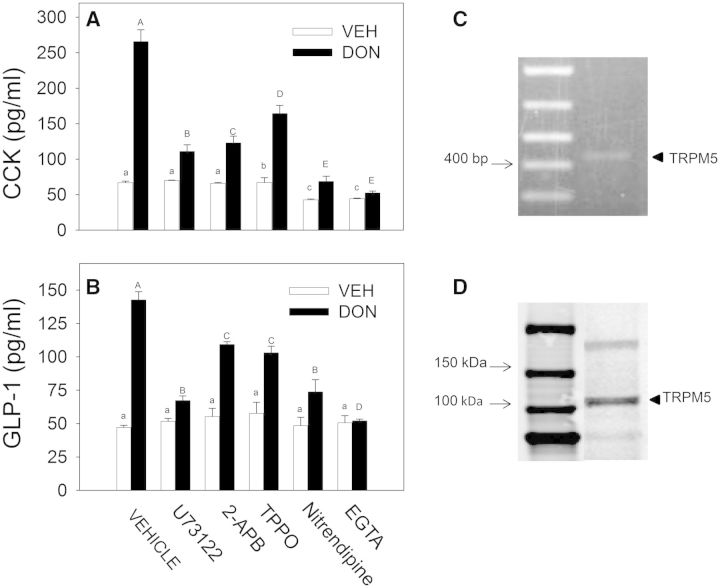FIG. 2.
DON-induced CCK and GLP-1 release in STC-1 cells depends on Ca2+ signaling and transient receptor potential melastatin-5 ion channel. A, B, STC-1 cells were preincubated for 15 min with: vehicle (DMSO); U73122 (10 µM), a phospholipase C inhibitor; 2-aminoethyl diphenyl-borinate (2-APB, 50 µM), an IP3 receptor antagonist; TPPO (10 µM), a selective inhibitor of TRPM5; nitrendipine (1 µM), an L-type voltage-sensitive Ca2+ channel (L-type VSCC) blocker; or EGTA (1 mM), a Ca2+ chelator. Cells were then incubated with DON (2 mM) for 30 min and supernatant fractions were analyzed for CCK (A) and GLP-1(B). Different lower case and upper case letters indicate significant differences within control and DON-treated cells, respectively (P < .05). (C, D) STC-1 cells express TRPM5. Total RNA was isolated from STC-1 cells and subjected to RT-PCR (C). Estimated size of product (429 bp) is consistent with TRPM5 (indicated by arrow). Total protein of STC-1 cells was extracted and TRPM5 presence determined by Western analysis (D) (indicated by arrow).

